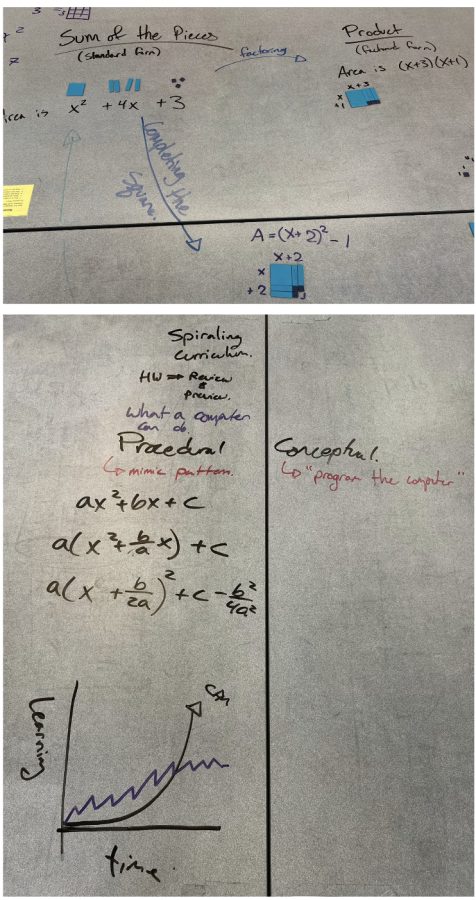Is the CPM math curriculum helping or hurting the student body?

Last year, the math department introduced the CPM curriculum to algebra, geometry, and trigonometry. Opinions arose as both teachers and students adjusted to the new form of learning. Micah Thorpe-Kramp, a Trigonometry teacher, explains the reasoning behind the implementation of CPM.
TK, as Thorpe Kramp is called, dived into the science behind mathematics. Traditional mathematics uses procedural thinking; the process of ‘mimicking’ instruction. Although this is effective for some, it limits the students ability to fully understand the concept and rather copy a pattern. CPM requires the student to engage in team based problem solving that is seen in the real world. It gives a reason for why math exists, while teaching skills that apply to other subjects. TK uses the metaphor of a computer to explain the difference. Procedural is “what a computer does,” while conceptual is “how we program it.”
Junior Stella Gomez, currently in Advanced Algebra/Trig believes there is a major disconnect between learning and retaining information. She states, “I would learn more if the class was teacher and student based, rather than student and group based.”
Others shared similar opinions. Junior Zoe Wetherbee describes the group learning environment: “The program is counterintuitive. If your group doesn’t know what they are doing, you will not know what you’re doing.” Wetherbee noted that group learning makes it much more difficult to understand concepts. This stems from accountability which is neglected when you have the option to rely on your group.
The negative viewpoint of CPM is based on the transition between procedural to conceptual learning. This can be a demanding transition especially from eighth grade to high school. As time progresses, their opinions may change as they adapt to the real world realm of math.

TK provides a visual representation of the way CPM educates. The students also provided insight on their CPM. (Maya Deaton and Sage Vasko)

Maya Deaton is a senior who is excited for her second year on Journalism staff. She is involved in Bellarmine athletics and clubs as a member of the cheerleading...

Sage Vasko is a senior this year who is looking forward to her second year on the Journalism staff! At Bellarmine, she is involved in Link Crew, Lion Outreach,...
